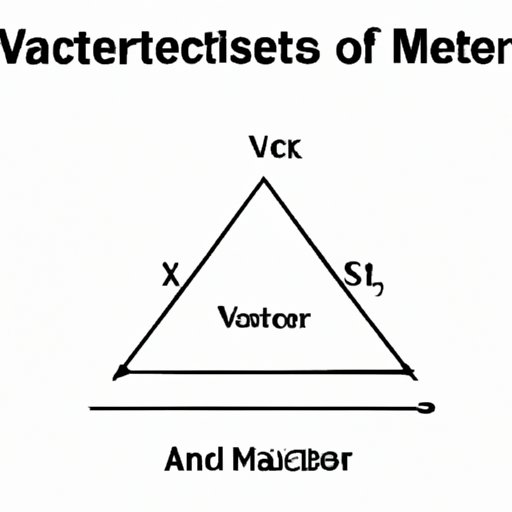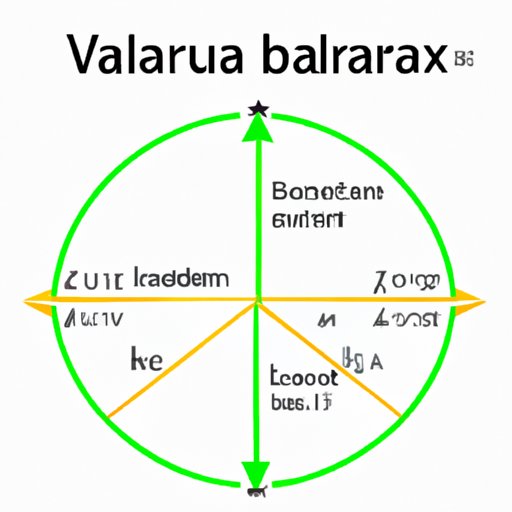Introduction
The quadratic equation is a fundamental concept in the world of mathematics. It is an equation that is represented in the form of ax² + bx + c = 0. The quadratic equation is commonly used in various fields, including physics, engineering, economics, and finance, among others. Solving quadratic equations is an essential skill required for understanding advanced mathematical concepts. One of the most critical components of solving quadratic equations is finding the vertex. In this article, we’ll explore the techniques, tools, and tips necessary to help you understand and locate the vertex effectively.
Unlocking the Mystery of the Vertex: Our Guide to Finding It
The vertex is a critical component of the quadratic equation because it gives us information about the shape of the parabola, which is represented by the quadratic equation. The vertex is the highest or the lowest point of the parabola, depending on whether the parabola opens upwards or downwards, respectively.
The first step in finding the vertex is understanding the basic concept of how to locate the vertex.
Solving Quadratic Equations through Vertex-Finding Techniques
Using the vertex is one of the most effective ways of solving a quadratic equation because it reduces the amount of calculation needed to solve the equation. To use the vertex to solve quadratic equations, follow these simple steps:
- Identify the values of a, b, and c in the quadratic equation.
- Calculate the axis of symmetry, which is represented by the formula x = -b/2a.
- Substitute the value of x obtained from step 2 into the quadratic equation to find the y-value.
- The vertex is represented by the coordinates (x, y).
Here is an example:
Given the quadratic equation y = 2x² + 4x + 3, find the vertex.
- a = 2, b = 4, and c = 3.
- x = -4/(2*2) = -1.
- Substitute x = -1 into the equation to get y = 2(-1)² + 4(-1) + 3 = -1.
- The vertex is represented by the coordinates (-1, -1).
Unraveling the Mathematics behind Vertex Determination
The formula for calculating the vertex is:
V = (-b/2a, f(-b/2a))
Where V represents the vertex, -b/2a is the axis of symmetry, and f(-b/2a) is the y-value of the vertex.
The formula for calculating the vertex can be derived using algebraic principles. Here’s how:
Given the quadratic equation y = ax² + bx + c, we can write the equation in vertex form as y = a(x-h)² + k.
In the vertex form of the equation, h is the x-coordinate of the vertex, and k is the y-coordinate of the vertex.
By completing the square, we can derive the formula for the vertex:
y = a(x² + bx/a + (b/2a)² – (b/2a)²) + c
y = a(x + b/2a)² – a(b/2a)² + c
y = a(x + b/2a)² – ab²/4a² + c
y = a(x + b/2a)² – (4ac – b²)/4a
The x-coordinate of the vertex is given by:
h = -b/2a.
The y-coordinate of the vertex is given by:
k = f(h) = a(h + b/2a)² – (4ac – b²)/4a.
Therefore, the vertex is given by:
V = (-b/2a, a(h + b/2a)² – (4ac – b²)/4a).
The Anatomy of a Parabola: How to Pinpoint the Vertex
A parabola is a curve that’s obtained by cutting a cone at an angle parallel to its side. The standard form of a parabola is y = ax² + bx + c, where a ≠ 0.
The properties of a parabola are:
- The vertex is the highest or the lowest point on the parabola.
- The axis of symmetry is a straight line that passes through the vertex and divides the parabola into two equal parts.
- The focus is a point on the axis of symmetry that is equidistant from the vertex and the directrix.
- The directrix is a line perpendicular to the axis of symmetry that is equidistant from the vertex and the focus.
To locate the vertex using a graphical representation of a parabola, use the following steps:
- Plot the points on the Cartesian plane.
- Draw the axis of symmetry, which is the vertical line passing through the vertex.
- Mark the y-value of the vertex.
- The vertex is represented by the coordinates (x, y).

Mastering the Art of Vertex Location: Simple Steps to Success
Here are some simple and effective tips for quickly locating the vertex:
- Identify the values of a, b, and c in the quadratic equation.
- Calculate the axis of symmetry using the formula x = -b/2a.
- Substitute the value of x obtained from step 2 into the quadratic equation to find the y-value.
- The vertex is represented by the coordinates (x, y).
It’s important to avoid common mistakes when locating the vertex. These mistakes include:
- Forgetting to divide -b by 2a when calculating the axis of symmetry.
- Forgetting to substitute the value of x obtained from calculating the axis of symmetry into the quadratic equation.
- Incorrectly skimming the parabola when identifying the vertex.
The Ultimate Guide to Finding the Vertex of a Quadratic Equation
Here’s a comprehensive guide for finding the vertex of any given quadratic equation:
- Identify the values of a, b, and c in the quadratic equation.
- Calculate the discriminant, which is represented by the formula b² – 4ac.
- If the discriminant is less than 0, then the quadratic equation has no real roots, and the vertex is the minimum value of the function.
- If the discriminant is greater than 0, then the quadratic equation has two distinct roots, and the vertex is the midpoint of the roots.
- If the discriminant is equal to 0, then the quadratic equation has a single root, and the vertex is the point where the function touches the x-axis.
- Calculate the axis of symmetry, which is represented by the formula x = -b/2a.
- Substitute the value of x calculated in step 6 into the quadratic equation to find the y-value.
- The vertex is represented by the coordinates (x, y).
Let’s use an example to illustrate this method:
Given the quadratic equation 3x² – 6x + 2, find the vertex.
- a = 3, b = -6, and c = 2.
- Discriminant = 6² – 4(3)(2) = 12. Since the discriminant is greater than 0, the quadratic equation has two distinct roots, which are given by the formula x = (-b ± √(b² – 4ac))/2a. Therefore, x = (6 ± 2√3)/6.
- The vertex is the midpoint of the roots, which is given by x = -b/2a = 6/6 = 1. Substituting 1 into the equation gives y = 3(1)² – 6(1) + 2 = -1.
- The vertex is represented by the coordinates (1, -1).
Locating the Vertex: Tips and Tricks for Quadratic Equation Enthusiasts
In conclusion, finding the vertex is a crucial element in solving quadratic equations. It helps us understand the shape, location, and properties of parabolas. Here are some additional tips and tricks to keep in mind:
- Practice locating the vertex using various methods and tools.
- Always double-check your calculations to avoid making errors.
- Understand the significance of the vertex in solving real-world mathematical problems.
- Use online resources, such as tutorials and video lectures, to reinforce your understanding of the topic.
Remember, locating the vertex of a quadratic equation is a skill that can be learned and mastered with practice. Keep practicing, keep learning, and keep growing your knowledge and understanding of this fundamental mathematical concept.
Conclusion
In this comprehensive guide, we’ve explored various techniques, tools, and tips for locating the vertex of a quadratic equation. We’ve learned that the vertex is a crucial component of the quadratic equation, as it provides information about the shape and properties of parabolas. We’ve also learned how to use the vertex to solve quadratic equations and the mathematical principles behind vertex determination. By mastering the art of vertex location, we can enhance our understanding of advanced mathematical concepts and apply them to real-world problems. With continued practice and learning, we can unlock the full potential of quadratic equations and become quadratic equation enthusiasts.
